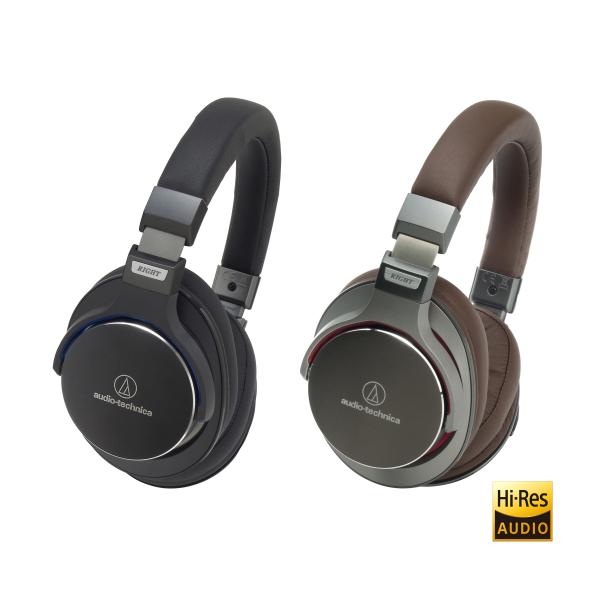Audio Technica ATH MSR7 Headphones Review: "Hi-Res" Moderate Price

Brand new to the US market, the Audio Technica ATH-MSR7 are closed-backed, over ear monitors that are designed to be high-resolution headphones for listening on the go. With 45mm True Motion drivers and a claimed frequency response of 5-40,000 Hz, the MSR7 want to pack all the detail and depth of professional headphones into wearable cans that even offer a removable cable with a single-button remote and mic. They sounded pretty good (from what I could tell, anyway) on the CES show floor, but how did they hold up under scrutiny in a decidedly better listening environment?
First of all, I want to say that I am still on the fence about the whole Hi-Res movement. To be honest, I really want to do some serious testing with blind A/B comparison before I’m ready to be convinced that Hi-Res is worth all the hype and extra cost. That said, with a moderate MSRP of around $250, the MSR7 avoid raising my price-gouging hackles. In this cost bracket, I’m happy to accept whatever headphones are labeled so long as they sound great. Which, fortunately, the MSR7 do.
In my previous experience, headphones that are labeled Hi-Res tend to have an insane amount of high frequency spikes that lead to a eardrum-piercingly sibilant quality that I find exceptionally fatiguing in longer listening sessions. However the MSR7, while definitely sounding peaked in the 3 kHz as well as 8-9 kHz ranges, don’t overdo this spike. Instead they add a bit of extra detail that self-described audiophiles would enjoy, as well as those who prefer some extra crispness to consonants, high-hat hits, and fret noise detail.
Balancing out the high end is a low frequency range that extends comfortably down and out of hearing range without rattling the chassis or over-modulating the drivers. This was by design, according to Audio Technica, who created the earcups out of a mix of aluminum and magnesium that they claim helps to remove unwanted resonance. The earcups also have three vents that were added to improve air flow and dynamics. It’s worth mentioning that these vents to compromise the sound isolation; so those in noisier listening environments (like CES or a crowded metro) may find more unwanted external noise, and thus need to increase music volume levels to compensate. Another build note: the head band’s clamping pressure is a bit stiff out of the box, so those with larger hat sizes might need to take some breaks in longer listening to give their cranium a break.
Overall, however, whatever AT did with the chassis, it seems to be working. Acoustic guitars and strings (especially celli) have depth to their body, and live recordings have a sense of space, as do movie soundtracks. The only instance where the Q can sound a bit overdone is when the bass is already pumped up in a song, as often happens in hip-hop and electronic music. Those who prefer a tighter bass might notice a slight bleed from the bassline into the mids. That said, brass are reigned in by the extra high-end detail, and so don’t suffer the same fate as boosted synth-created wave envelopes.
Great sound, plus a carrying case, and three cables, all for under $300. Offering all of that, the ATH-MSR7 with make those looking for the Hi-Res experience very happy.
The ATH-MSR7 are available for $249.95 at AudioTechnica.com.
- Log in or register to post comments






























































